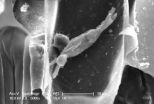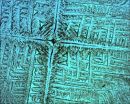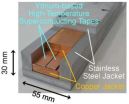(Press-News.org) New York, NY - July 24, 2014 -- Keryx Biopharmaceuticals, Inc. (Nasdaq:KERX) (the "Company") announced the publication of results from the long-term, randomized, active control Phase 3 study of Zerenex (ferric citrate), the Company's investigational oral ferric iron-based phosphate binder, for the treatment of hyperphosphatemia in patients with end-stage renal disease (ESRD) on dialysis. The PERFECTED study (PhosphatE binding and iRon delivery with FErric CiTrate in EsrD) was published online today in the Journal of the American Society of Nephrology (JASN).
This Phase 3 study was a multicenter, randomized, open-label trial in 441 ESRD patients on hemodialysis or peritoneal dialysis designed to determine the safety and efficacy of Zerenex as a treatment to reduce serum phosphorus as well as raise iron stores and reduce intravenous (IV) iron and erythropoietin-stimulating agents (ESA) usage.
Zerenex met the study's primary end-point demonstrating a highly statistically significant change in serum phosphorus versus placebo over the four-week Placebo Control Period. Using a sequential gatekeeping strategy for the key pre-defined secondary end-points, Zerenex also demonstrated statistically significant increases in serum ferritin and transferrin saturation (TSAT), and significant reductions in the use of IV iron and ESAs, versus an active control of Renvela® (sevelamer carbonate) and/or Phoslo® (calcium acetate) over the 52-week Active Control Period of the study. In addition, mean hemoglobin levels were higher in subjects treated with Zerenex as compared to subjects treated with active control.
"Zerenex effectively reduces serum phosphorus levels within the KDOQI range (3.5 mg/dL to 5.5 mg/dL) while having the additional patient benefits of increasing iron stores and decreasing the need for IV iron and ESAs, while maintaining hemoglobin levels," said Julia Lewis, MD, lead investigator, nephrologist and Professor of Medicine at Vanderbilt University Medical Center. "If approved, the combined benefits of Zerenex would be of value for patients, health care professionals and the healthcare system."
The Company's New Drug Application (NDA) for Zerenex is currently under review by the U.S. Food and Drug Administration (FDA).
Ron Bentsur, Chief Executive Officer of Keryx, commented, "We are very pleased with the publication of the Phase 3 PERFECTED study results in a premier peer-reviewed nephrology journal and are encouraged by Zerenex's potential differentiated product profile." Mr. Bentsur added, "We thank the investigators and patients who participated in this study and look forward to potentially bringing Zerenex to market in the U.S."
Phosphorus Control is Necessary for Most ESRD Patients on Dialysis
In the United States, according to data from the U.S. Renal Data System, there are currently approximately 600,000 ESRD patients, with the number of ESRD patients projected to rise in the future. The majority of ESRD patients in the United States, more than 400,000, require dialysis. Phosphate retention and the resulting hyperphosphatemia in patients with ESRD on dialysis are associated with secondary hyperparathyroidism, renal osteodystrophy, soft tissue mineralization and an increase in adverse cardiovascular events. Hyperphosphatemia is ubiquitous in ESRD, with the majority of the patients requiring chronic treatment with phosphate-binding agents to lower and maintain serum phosphorus at acceptable levels.
Zerenex Administration Over 52 Weeks Increased Iron Stores
In addition, approximately seventy percent of dialysis patients are truly or functionally iron depleted, suffer from anemia and require treatment with IV iron and/or ESA injections. The newly published clinical trial results show that, in addition to its efficacy as a phosphate binder, Zerenex also significantly raises iron stores as measured by serum ferritin and TSAT.
The results showed Zerenex demonstrated a statistically significant treatment difference versus the active control group in mean change in serum ferritin (+306 ng/mL vs. +19 ng/mL) and TSAT (+8% vs -1.2%) from baseline (day 0) to week 52. In the PERFECTED study, subjects randomized to receive Zerenex required significantly lower dosages of IV iron and ESA; and hemoglobin levels were higher in Zerenex treated patients than in those receiving active control.
The investigators cited an analysis of the trial results that indicated that the projected reduction in the need for IV iron and ESA use would result in significant pharmaco-economic benefits. In addition, the investigators wrote, "one would postulate that decreased IV iron and ESA usage could result in decreased nursing time to administer IV medications which could be redirected to other aspects of patient care and decreased risk of infections due to fewer IV injections." In the PERFECTED study, fewer serious adverse events (SAEs) due to infection were seen in the subjects randomized to Zerenex compared to active control.
The authors noted that, if approved, Zerenex would be the only phosphate binder that also increases iron stores and decreases IV iron and ESA use.
Study Design and Results
Subjects in the PERFECTED study (n=441) first entered a 2-week washout period and were then randomized in a 2:1 ratio to receive either Zerenex or an active control of Renvela® (sevelamer carbonate) and/or Phoslo® (calcium acetate) for a 52-week Active Control Period. This was then followed by a 4-week Placebo Control Period in which Zerenex subjects were again randomized to either continue on Zerenex or switch to placebo. Zerenex was administered as 1 gram tablets each containing 210 mg of ferric iron. Active control study drugs were administered as calcium acetate 667 mg capsules, sevelamer carbonate 800 mg tablets alone or in combination.
The primary end-point of this trial was the mean change in serum phosphorus from baseline (Week 52) to the end of the 4-week Placebo Control Period. A prospectively designed sequential gatekeeping strategy controlled study-wise type 1 error for serum ferritin, TSAT, IV iron and ESA usage as pre-specified secondary endpoints in the 52-week Active Control Period.
The primary end-point demonstrated mean serum phosphorus was lower in the ferric citrate group versus the placebo group with a mean treatment difference of -2.2 ± 0.2 mg/dL (P END
Zerenex (ferric citrate) long-term Phase 3 study results published in JASN
Data demonstrate the drug candidate's potential to become the first phosphate binder to increase iron stores while reducing the need for IV iron and erythropoiesis-stimulating agents in end-stage renal disease patients on dialysis
2014-07-25
ELSE PRESS RELEASES FROM THIS DATE:
New hope for powdery mildew resistant barley
2014-07-25
New research at the University of Adelaide has opened the way for the development of new lines of barley with resistance to powdery mildew.
In Australia, annual barley production is second only to wheat with 7-8 million tonnes a year. Powdery mildew is one of the most important diseases of barley.
Senior Research Scientist Dr Alan Little and team have discovered the composition of special growths on the cell walls of barley plants that block the penetration of the fungus into the leaf.
The research, by the ARC Centre of Excellence in Plant Cell Walls in the University's ...
NRG1 isoforms could be an effective therapeutic candidate to promote peripheral nerve regeneration
2014-07-25
Neuregulin 1 (NRG1) is a pleiotropic factor characterized by the existence of numerous isoforms arising from alternative splicing of exons that confer to the protein deeply different characteristics. NRG1 plays an important role for both the myelination occurring during development and the different phases occurring after injury in the peripheral nerve: axon degeneration, axon regrowth, remyelination and target reinnervation
Researchers at the University of Western Australia have discovered that the soluble NRG1 upregulation observed in Schwann cells immediately after ...
Assessment on self-care ability of children with spina bifda
2014-07-25
Spina bifda (SB) is a complex congenital central nervous system disease that is caused by the incomplete closing of the neural tubes during the embryonic phase. Many patients have varying degrees of spasticity, urinary and fecal incontinence and neurocognitive retardation. Such problems decrease the patients' functional independence and their quality of life. Researchers at Ankara Physical Medicine and Rehabilitation Education and Research Hospital, Turkey investigate the functional performance in children with SB, using the Pediatric Evaluation of Disability Inventory ...
Neurologic recovery from corticospinal tract injury due to subfalcine herniation
2014-07-25
After development of diffusion tensor tractography (DTT), which is derived from diffusion tensor imaging (DTI), three-dimensional reconstruction and estimation for three motor tracts, such as the corticospinal tract, the rubrospinal tract, and the corticoreticular pathway became possible. The corticospinal tract is known to be a major neural tract for motor function in the human brain. Several studies have reported on injury of the corticospinal tract by transtentorial herniation. In addition, some studies have demonstrated recovery of a corticospinal tract injured by transtentorial ...
Bacteria manipulate salt to build shelters to hibernate
2014-07-25
For the first time, Spanish researchers have detected an unknown interaction between microorganisms and salt. When Escherichia coli cells are introduced into a droplet of salt water and is left to dry, bacteria manipulate the sodium chloride crystallisation to create biomineralogical biosaline 3D morphologically complex formations, where they hibernate. Afterwards, simply by rehydrating the material, bacteria are revived. The discovery was made by chance with a home microscope, but it made the cover of the Astrobiology journal and may help to find signs of life on other ...
Breakthrough laser experiment reveals liquid-like motion of atoms in an ultra-cold cluster
2014-07-25
A new study by researchers from the University of Leicester has furthered our understanding of how tiny nanosystems function, unlocking the potential to create new materials using nanosized 'building blocks'.
The study, which has been published in the prestigious academic journal Physical Review Letters, used a novel laser technique to examine in rich detail the structure and internal atomic motion of a small cluster containing an acetylene molecule and a single helium atom.
The technique excited single clusters and generated rotational wavepackets, which are composed ...
Magnets for fusion energy: A revolutionary manufacturing method developed
2014-07-25
The National Institute for Fusion Science (NIFS), of the National Institutes of Natural Sciences (NINS) in Japan, has achieved an electrical current of 100,000 amperes, which is by far the highest in the world, by using the new idea of assembling the state-of-the-art yttrium-based high-temperature superconducting tapes to fabricate a large-scale magnet conductor.
NIFS is undertaking the development of a high-temperature superconducting coil that is appropriate for the fusion reactor magnet. Using the state-of-the-art yttrium-based high-temperature superconducting tapes ...
Physicists create tool to foresee language destruction impact and thus prevent it
2014-07-25
There have been numerous cases of cultural changes throughout history. Either by imposition or assimilation, cultural traits are transmitted between neighbouring regions and often one replaces the original cultural traits of the other. Physicists Joaquim Fort, from the University of Girona (UdG), and Neus Isern, from the Universitat Autònoma de Barcelona (UAB), are experts in modelling these phenomena by adequately representing a reality, as they have demonstrated with their previous projects.
In this occasion, the researchers applied their expertise to the area of language ...
Collecting just the right data
2014-07-25
Much artificial-intelligence research addresses the problem of making predictions based on large data sets. An obvious example is the recommendation engines at retail sites like Amazon and Netflix.
But some types of data are harder to collect than online click histories —information about geological formations thousands of feet underground, for instance. And in other applications — such as trying to predict the path of a storm — there may just not be enough time to crunch all the available data.
Dan Levine, an MIT graduate student in aeronautics and astronautics, and ...
Could age of first period influence development of diseases in older women?
2014-07-25
BOSTON—A novel study shows that the age girls reach puberty is influenced by 'imprinted genes'—a subset of genes whose activity differs depending on which parent contributes the gene. This is the first evidence that imprinted genes can control the rate of development after birth and details of this study were published today in the journal Nature.
Age of the first period, known as menarche, is a marker for the timing of puberty in females. Medical evidence shows that the onset of menses varies between girls, is an inherited trait, and is linked to breast cancer, diabetes ...
LAST 30 PRESS RELEASES:
National poll: Less than half of parents say swearing is never OK for kids
Decades of suffering: Long-term mental health outcomes of Kurdish chemical gas attacks
Interactional dynamics of self-assessment and advice in peer reflection on microteaching
When aging affects the young: Revealing the weight of caregiving on teenagers
Can Canada’s health systems handle increased demand during FIFA World Cup?
Autistic and non-autistic faces may “speak a different language” when expressing emotion
No clear evidence that cannabis-based medicines relieve chronic nerve pain
Pioneering second-order nonlinear vibrational nanoscopy for interfacial molecular systems beyond the diffraction limit
Bottleneck in hydrogen distribution jeopardises billions in clean energy
Lung cancer death rates among women in Europe are finally levelling off
Scientists trace microplastics in fertilizer from fields to the beach
The Lancet Obstetrics, Gynecology, & Women’s Health: Taking paracetamol during pregnancy does not increase risk of autism, ADHD or intellectual disabilities, confirms new gold-standard evidence review
Taking paracetamol during pregnancy does not increase risk of autism, ADHD or intellectual disabilities
Harm reduction vending machines in New York State expand access to overdose treatment and drug test strips, UB studies confirm
University of Phoenix releases white paper on Credit for Prior Learning as a catalyst for internal mobility and retention
Canada losing track of salmon health as climate and industrial threats mount
Molecular sieve-confined Pt-FeOx catalysts achieve highly efficient reversible hydrogen cycle of methylcyclohexane-toluene
Investment in farm productivity tools key to reducing greenhouse gas
New review highlights electrochemical pathways to recover uranium from wastewater and seawater
Hidden pollutants in shale gas development raise environmental concerns, new review finds
Discarded cigarette butts transformed into high performance energy storage materials
Researchers highlight role of alternative RNA splicing in schizophrenia
NTU Singapore scientists find new way to disarm antibiotic-resistant bacteria and restore healing in chronic wounds
Research suggests nationwide racial bias in media reporting on gun violence
Revealing the cell’s nanocourier at work
Health impacts of nursing home staffing
Public views about opioid overdose and people with opioid use disorder
Age-related changes in sperm DNA may play a role in autism risk
Ambitious model fails to explain near-death experiences, experts say
Multifaceted effects of inward foreign direct investment on new venture creation
[Press-News.org] Zerenex (ferric citrate) long-term Phase 3 study results published in JASNData demonstrate the drug candidate's potential to become the first phosphate binder to increase iron stores while reducing the need for IV iron and erythropoiesis-stimulating agents in end-stage renal disease patients on dialysis



